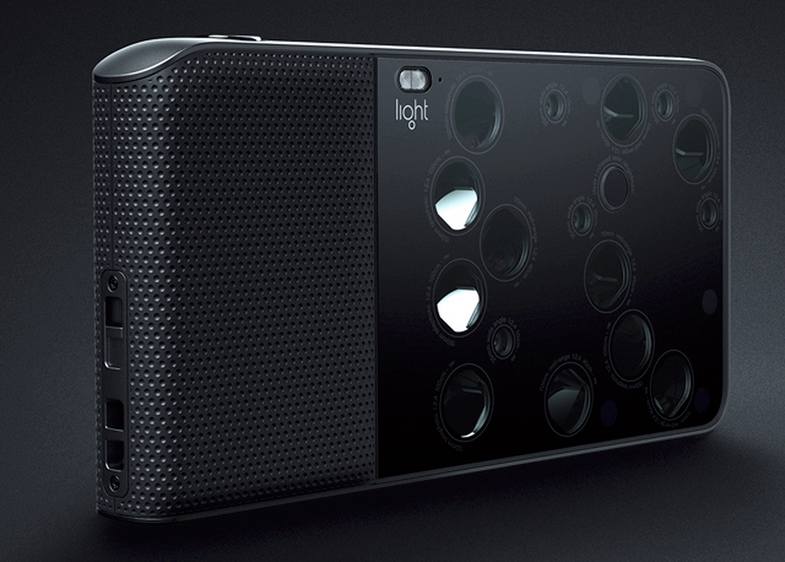The Light L16 Camera Has 16 Individual Cameras and Lots of Clever Tech
It uses 10 cameras firing at once and a pile of processing power to create high-quality images

Even in traditional cameras, software and processing power has become a huge part of the image capture process. Now, a clever new camera called the Light L16 is using a unique 16 camera array to capture its images, firing 10 individual imaging devices at once. The internal software then mashes the images together, resulting in 50+ megapixel images and a variety of available image effects.
The body of the camera is roughly the size of a few large smartphones stacked on top of one another, so it looks like it would fit in a pocket, even if it would be a bit of a tight squeeze. But, they managed to fit 16 cameras and lenses in there by using folding optics, which means the light comes in and hits a mirror and then is sent through a lens that’s actually laying perpendicular to the angle of entry.
It has a true optical zoom range of 35-150mm, which isn’t quite as wide as I would like—smartphones have really made people accustomed to having that 28mm equivalent wide angle field of view—but it is apparently true optical zoom and not digital cheating.
Even in traditional cameras, software and processing power has become a huge part of the image capture process. Now, a clever new camera called the Light L16 is using a unique 16 camera array to capture its images, firing 10 individual imaging devices at once. The internal software then mashes the images together, resulting in 50+ megapixel images and a variety of available image effects.
The body of the camera is roughly the size of a few large smartphones stacked on top of one another, so it looks like it would fit in a pocket, even if it would be a bit of a tight squeeze. But, they managed to fit 16 cameras and lenses in there by using folding optics, which means the light comes in and hits a mirror and then is sent through a lens that’s actually laying perpendicular to the angle of entry.

It has a true optical zoom range of 35-150mm, which isn’t quite as wide as I would like—smartphones have really made people accustomed to having that 28mm equivalent wide angle field of view—but it is apparently true optical zoom and not digital cheating.
Of course, the L16 can also shoot video at 4K resolution at several different focal lengths, but the focus here seems to be on the still photography capabilities.
Once the image is captured, there’s a whole bunch of computation that needs to go on in order to make the best possible image. With all that imaging information, they’re able to do things like significantly reduce noise in low-light images, and even adjust depth of field after the fact thanks to the camera’s abilities to independently capture images with different settings the moment the shutter is pressed.
Unlike the Lytro light field camera, the L16 is meant to fit into a more traditional photography workflow, so once it’s done chewing through all the data, it spits out a traditional image format photo like a JPEG, Tiff, or even a DNG raw file.

Right now, the camera is available for pre-order for $1,299 because it’s the launch month. Eventually, the price will go up to $1,699, which makes it a fairly expensive commitment for a first generation product, but I believe this one actually has a lot of promise.
We have already seen what’s possible when you use software to combine the information contained in multiple images. Even traditional camera users have been doing it more and more lately, with night shooters using reference frames to tame noise during their night shots, and HDR shooters combining photos to create images that a typical camera can’t capture (for better or for worse).
I’m very curious to give the Light L16 a try and, despite my love for DSLRs, I hope they can deliver on their claims of image quality and usability.
